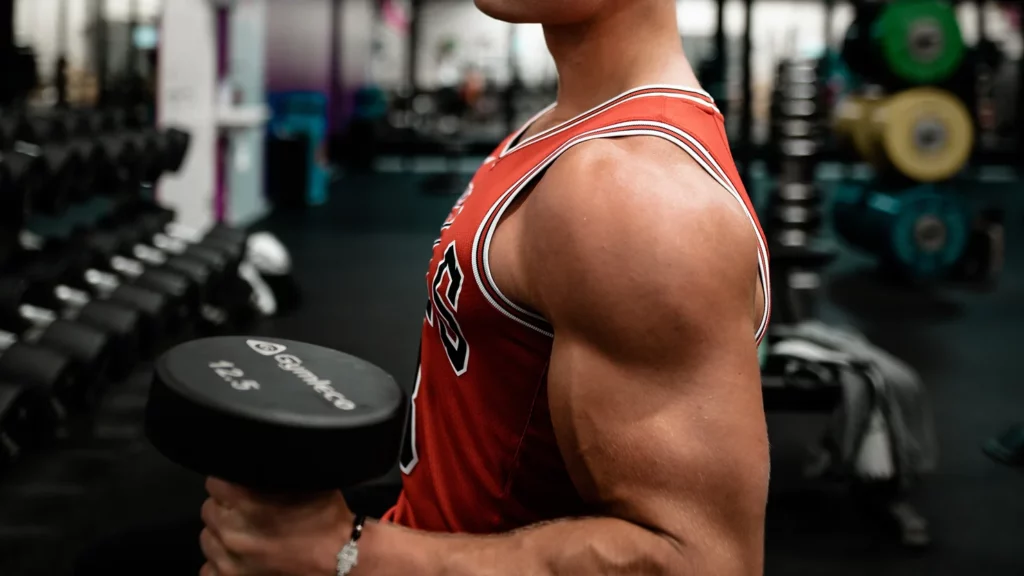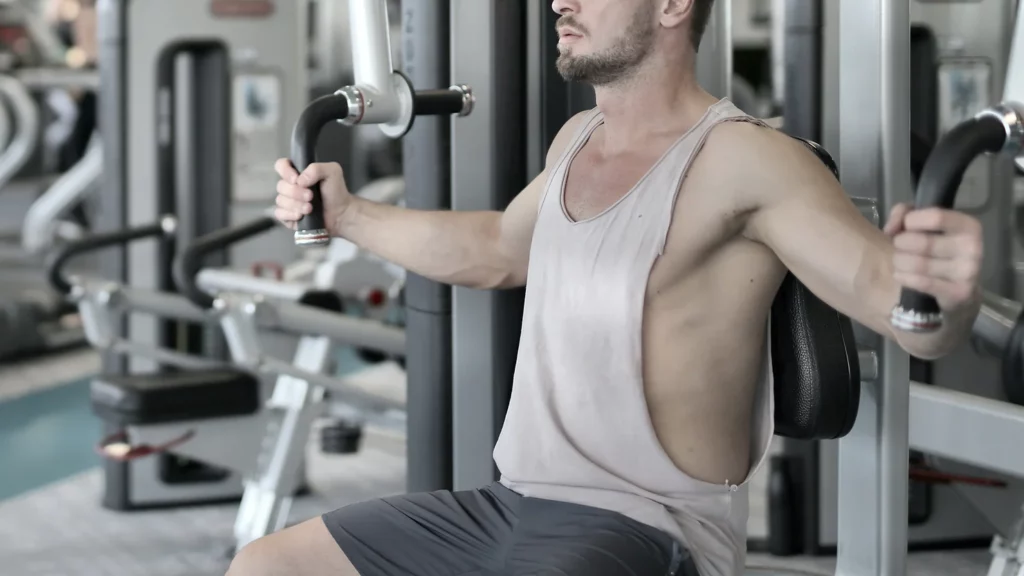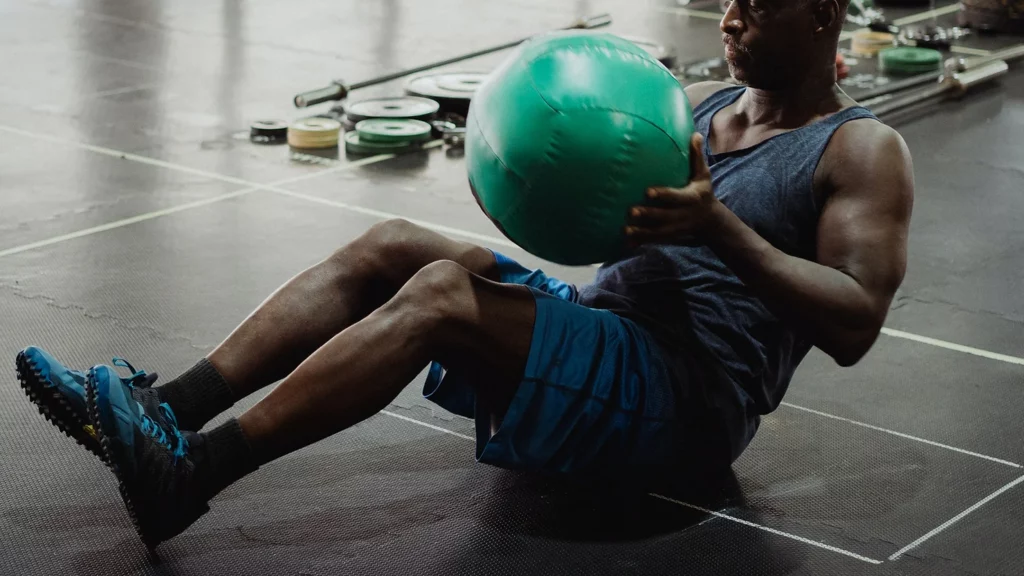The lateral deltoid exercise is a great way to add size and strength to your shoulders. It is important to focus on the muscle-building aspects of this exercise and to learn how to properly perform it. In this article, we will discuss how to do the lateral deltoid exercise correctly, as well as some common mistakes people make when doing it. Let’s get started!
Shoulder Anatomy
Before we get into how to do the lateral deltoid exercise, it is important to understand the shoulder anatomy. The shoulder is a ball-and-socket joint that is made up of three bones: the clavicle (collarbone), the scapula (shoulder blade), and the humerus (upper arm bone). The shoulder joint is held together by a number of muscles, ligaments, and tendons.
There are multiple heads of the deltoid muscle: the anterior (front), lateral (side), and posterior (rear). The lateral deltoid is the focus of this exercise. It originates on the lateral clavicle and inserts on the humerus. Its main function is to abduct the arm, which means to move it away from the body. The anterior is located in front of the lateral deltoid and its function is to flex the arm, which means to bring it towards the body. The posterior deltoid is located behind the lateral deltoid and its function is to extend the arm, which means to move it away from the body.
Benefits of Lateral Deltoid Exercises
There are many benefits to lateral deltoid exercises, including:
-
Increased muscle size and definition
-
Improved strength and power
-
Enhanced joint stability
-
Reduced risk of injury
Now let’s look at these benefits in more detail.
The first benefit of lateral deltoid exercises is increased muscle size and definition. When you perform lateral deltoid exercises, you are working the lateral head of the deltoid muscle. This will result in increased muscle size and definition in this area. The second benefit of lateral deltoid exercises is improved strength and power. These exercises will help to improve your overall shoulder strength and power. The third benefit of lateral deltoid exercises is enhanced joint stability. This is because the lateral deltoid muscle helps to stabilize the shoulder joint. The fourth benefit of lateral deltoid exercises is reduced risk of injury. This is because lateral deltoid exercises help to strengthen the muscles and ligaments around the shoulder joint, which can reduce the risk of injury.
Lateral Deltoid Exercises
Now that we have looked at the benefits of lateral deltoid exercises, let’s look at some specific exercises that you can do to target this muscle.
Exercise #1: Lateral Raise
The lateral raise is one of the most effective lateral deltoid exercises.
Set up:
-
Stand with your feet shoulder-width apart and your knees slightly bent.
-
Hold a dumbbell in each hand at arm’s length by your sides, with your palms facing your thighs.
Execution:
-
Slowly raise the dumbbells to the side until they are level with your shoulders.
-
pause for a moment, and then slowly lower the dumbbells back to the starting position.
-
Repeat for the desired number of repetitions.
Exercise #2: Dumbbell lateral raise with internal rotation
This exercise is a variation of the lateral dumbbell raise that adds in internal rotation.
Set up:
-
Stand with your feet shoulder-width apart and your knees slightly bent.
-
Hold a dumbbell in each hand at arm’s length by your sides, with your palms facing your thighs.
Execution:
-
Slowly raise the dumbbells to the side until they are level with your shoulders.
-
As you reach the top of the lateral raise, rotate your hands so that your palms are facing forward.
-
pause for a moment, and then slowly lower the dumbbells back to the starting position.
-
Repeat for the desired number of repetitions.
Exercise #3: Lateral raise with Resistance Band
This exercise is a variation of the lateral dumbbell raise that uses a resistance band instead of dumbbells.
Set up:
-
Stand with your feet shoulder-width apart and your knees slightly bent.
-
Hold the resistance band in your left hand and place your right hand on your hip.
Execution:
-
Slowly raise the resistance band to the side until it is level with your shoulder.
-
Pause for a moment, and then slowly lower the resistance band back to the starting position.
-
Repeat for the desired number of repetitions.
Exercise #4: Seated lateral dumbbell raise
This exercise is a variation of the lateral dumbbell raise that is performed while seated.
Set up:
-
Sit on the edge of a bench with your feet shoulder-width apart and your knees slightly bent.
-
Hold a dumbbell in each hand at arm’s length by your sides, with your palms facing your thighs.
Execution:
-
Slowly raise the dumbbells to the side until they are level with your shoulders.
-
Pause for a moment, and then slowly lower the dumbbells back to the starting position.
-
Repeat for the desired number of repetitions.
Exercise #5: Kettlebell lateral raise
This exercise is a variation of the lateral dumbbell raise that uses a kettlebell instead of dumbbells.
Set up:
-
Stand with your feet shoulder-width apart and your knees slightly bent.
-
Hold a kettlebell in each hand at arm’s length by your sides, with your palms facing your thighs.
Execution:
-
Slowly raise the kettlebells to the side until they are level with your shoulders.
-
Pause for a moment, and then slowly lower the kettlebells back to the starting position.
-
Repeat for the desired number of repetitions.
Exercise #6: Arnold Press
This exercise is a variation of the lateral dumbbell raise that uses two dumbbells.
Set up:
-
Sit on the edge of a bench with your feet shoulder-width apart and your knees slightly bent.
-
Hold a dumbbell in each hand at arm’s length by your sides, with your palms facing your thighs.
Execution:
-
Slowly raise the dumbbells to the side until they are level with your shoulders.
-
As you reach the top of the lateral raise, rotate your hands so that your palms are facing forward.
-
Pause for a moment, and then slowly lower the dumbbells back to the starting position.
-
Repeat for the desired number of repetitions.
Exercise #7: Barbell Upright Row
This exercise is a variation of the lateral dumbbell raise that uses a barbell.
Set up:
-
Stand with your feet shoulder-width apart and your knees slightly bent.
-
Hold the barbell with an overhand grip at arm’s length in front of you, with your palms facing your thighs.
Execution:
-
Slowly raise the barbell to the side until it is level with your shoulders.
-
As you reach the top of the lateral raise, rotate your hands so that your palms are facing forward.
-
Pause for a moment, and then slowly lower the barbell back to the starting position.
-
Repeat for the desired number of repetitions.
Common Lateral Deltoid Exercise Mistakes
Now that we have looked at some lateral deltoid exercises, let’s look at some common mistakes people make when performing these exercises.
Mistake #1: Not using a full range of motion
One common mistake people make when performing lateral deltoid exercises is not using a full range of motion. To avoid this mistake, be sure to raise the weights until they are level with your shoulders and lower the weights all the way back down to the starting position.
Mistake #2: Lifting too heavy
Another common mistake people make when performing lateral deltoid exercises is lifting too heavy. Lifting too heavy can lead to poor form and can increase your risk of injury. To avoid this mistake, use a weight that you can lift with good form for the desired number of repetitions.
Mistake #3: Not pausing at the top
A final common mistake people make when performing lateral deltoid exercises is not pausing at the top. Not pausing at the top can lead to momentum, which can take away from the muscle-building benefits of the exercise. To avoid this mistake, be sure to pause for a moment at the top of each repetition.
Summary
In conclusion, lateral deltoid exercises are a great way to build muscle and should be incorporated into your workout routine. When performing lateral deltoid exercises, be sure to use a full range of motion, lift with good form, and pause at the top of each repetition. Avoiding these common mistakes will help you get the most out of your lateral deltoid workouts.
Are you looking to get fit? Look no further! Our fitness programs are designed to help you build a strong and aesthetic physique. We also provide easy-to-follow routines that will fit any schedule. With our fitness programs, you'll have the tools you need to build muscle and achieve your fitness goals. Click the link below to get started!



